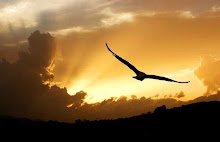Bordeaux, located in the Southwest of France, is the largest and the world’s most influential wine region. With its unique Terroir - the combination of great soil and great microclimate, it produces more of the world's finest wine than any other, and they have been a benchmark for others to follow.
The Red wines are made primary of three varieties namely Cabernet Sauvignon, Cabernet Franc and Merlot which are blended together to give the final style. Each grape in the Bordeaux blend complements the other, resulting in a balanced and harmonious wine. Blending is an art, which requires both experience and know-how – two qualities that abound in Bordeaux, where a long traditional and cutting edge wine making techniques continually enrich each other.
Although Bordeaux is predominantly a red wine region, it also produces some of the world's finest white wines — like the dry whites from Graves and the sweet wines from Sauternes. The white wines are made predominantly from a blend of two white grape varieties, Sauvignon Blanc, a grape that provides good acidity and sugar. It has a huge aromatic potential ranging from grassy notes to citrus and exotic fruits.
Thanks
Wingcent
wingcent@singnet.com.sg
http://mysignaturewines.blogspot.com
Singapore































